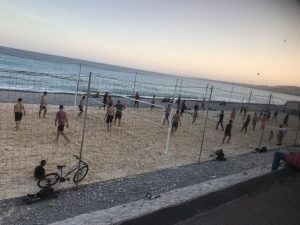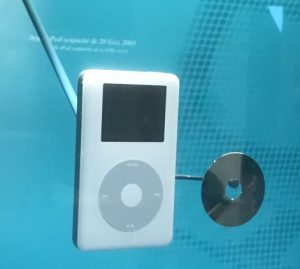

It isn’t an official trip to Paris if you don’t go and visit the Eifel Tower, and it is arguably most beautiful at night when it is all lit up. This is why I went to see it one night when I felt claustrophobic in the house. The view of the Eifel and the breeze over the Seine if definitely a great study break. However, I am glad I do not live very close to the tower, because it would be rather hard to sleep with all that illumination. With all our technology nowadays, it is a known concern that our sleep schedules are getting thrown off. I am at least happy for the people of this neighborhood that the Eifel uses high temperature yellow light that puts you at ease, and not the cold, blue light that comes of off computer screens, which has been shown to have alerting effects.













